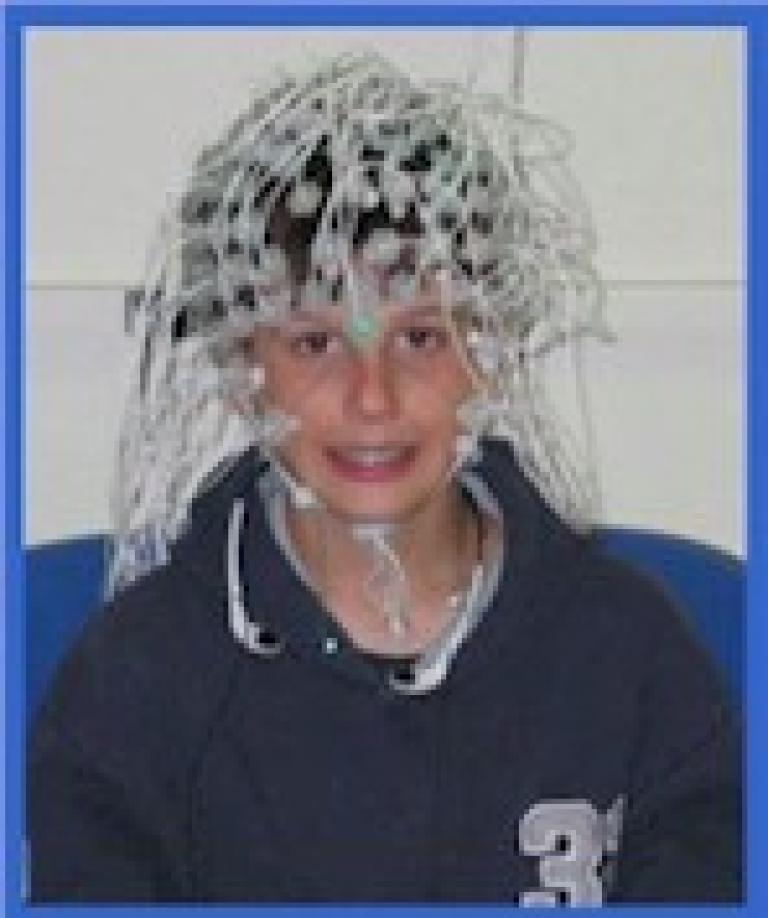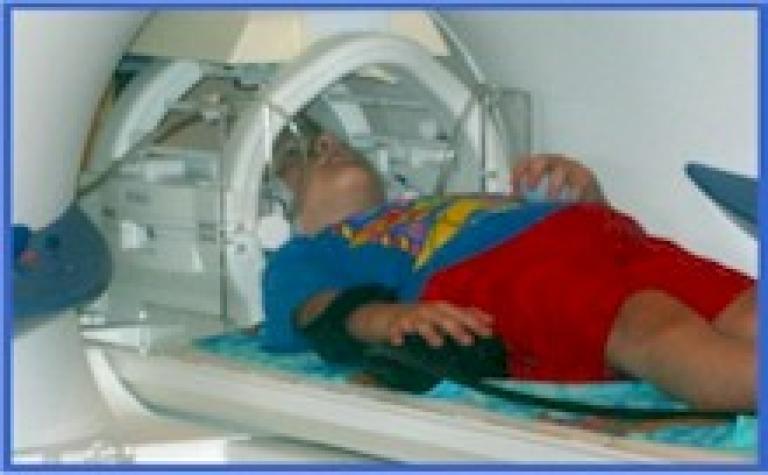Research participation
General information
We are always looking for healthy adults and children to participate in our studies! We have several ongoing studies for adults (18-35 years) and child participants (7-months to 17 years). Some of our studies involve simple computer tasks that involve pressing buttons on a keyboard or mouse. Other studies involve measuring the electrical activity of the brain associated with completing computer tasks by using noninvasive electroencephalography (EEG) or magnetic resonance imaging (MRI) techniques. All of our projects involve either one or two visits that usually last from 30 minutes to 3.5 hours. We provide parking and participants are compensated or given small gifts.



To participate in our studies
We would be happy to speak to you personally about participation in our studies and provide you with additional information. Please fill out and submit the online research participation form. The form link below will take you to a secure survey to submit your information. The form will open in a new window, which you can simply close when you are done. Adult Online Participation Form Child Online Participation Form You will then be contacted by a member of our research team who will provide you with additional information about our various studies. Requesting further information does not commit you to participating in any of our research programs. For further questions, please visit the FAQ section below.
FAQ
General Questions:
When does participation take place? When there is a specific study we will arrange a time for your participation. We are generally available Monday to Fridays between 9-5pm. If you are not available during regular business hours on weekdays due to work/school commitments, we may also be able to arrange a more convenient day/time for you to participate. Where is the Institute of Child Development building located on campus? The Institute of Child Development is located on the University of Minnesota's Twin Cities campus. See map and directions. Where is the Center for Magnetic Resonance Research (CMRR)? The Center for Magnetic Resonance Research is also located on the University of Minnesota campus. See map and directions. Will I get paid for participating / How much would I get paid? Yes, all participants are compensated for taking part in all of our studies. We also provide parking adjacent to our building for all research participants who will be driving to campus. The amount of compensation does vary and it depends on the time commitment involved and the nature of the particular study. Child participants receive a gift certificate or a toy and their parents are compensated for travel to the University. Will I hear about the results of the study? Yes, participants will receive our newsletter in the mail stating the preliminary results of our studies. Can I specify which studies I'm interested in participating in or will I always be considered for all of your studies? Yes, you can specify if you are interested in participating in our computer task, EEG, and/or MRI studies. We would contact you only for the type(s) of studies that you have expressed an interest in.
Questions Regarding EEG/MRI:
What is an EEG / What does an EEG study entail? EEG is a technique employed by our lab to measure the electrical activity of the brain associated with the computer task. It involves placing a net of sponges on the scalp and then sitting in front of a computer either watching pictures on the screen and/or making responses on a keyboard or mouse. The EEG nets that we use in our studies are different from clinical EEG nets which use gels/pastes to secure the net on the head. We simply dip our net in a water solution so the only drawback would be that your hair would get damp. What is an MRI scanner / What does the MRI procedure entail? MRI (magnetic resonance imaging) is a method of obtaining a 3-D image of the brain. We can also identify which parts of the brain are active while you are performing a computer task. It is different from an X-ray in the sense that there is no radiation involved. Nor does it require any medications or injections. It is a non-invasive procedure. The way it works is that you would lie still on a bed in a tunnel-like structure, and complete the computer task while lying still. While doing this the MRI scanner images the brain's activity.
Questions Regarding Child Participation:
I don't think my child would like an MRI or would be able to stay still / Are kids usually okay with this? Most children enjoy it. It's interesting for them and they are easily engaged by the tasks, because they are designed for kids. Many of our tasks, for example, use pictures of popular cartoon characters. Also, we have an MRI simulator on campus, which looks and sounds like an actual scanner but does not actually take pictures of the brain. We use the simulator to familiarize children with the scanning environment and make sure they're comfortable with it before the actual scan takes place. Any child who doesn't like it or doesn't want to try it can discontinue participation at any time. Will you be able to tell me anything about my child / my child's development? Or, will you be able to detect abnormalities in my child's brain from the MRI? Probably not. In order for us to draw meaningful conclusions from the data we collect, we have to look at the data from many participants grouped together. Any one individual's data is not significant. As far as the MRI is concerned, the MRI scans that we do are not diagnostic. We might be able to detect gross brain abnormalities from our scanning procedures, but that's all. If that were the case then you would be notified and referred to a clinician.